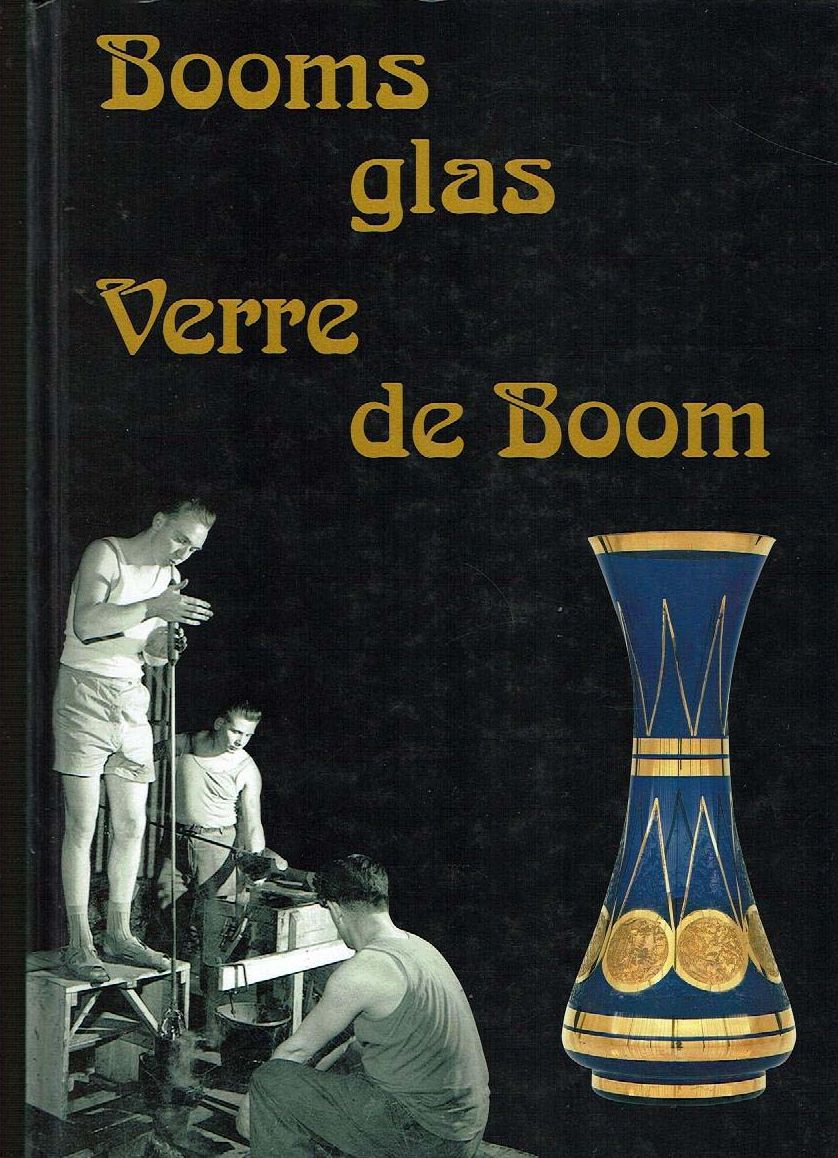|
|
The book 'Booms Glas' (2004)and the2005 Exhibition provided the answers to many collector's questions. Stories from the workers and original designs are also richly illustrated with examples from private collections. De Rupel glassworks started production in 1925 in Boom, a small village between Brussels and Antwerp in Belgium. The increasing success of the Val-St-Lambert factory was encouraging, and orders for mould-blown beerglasses were enough to keep the small factory busy. They were the producers of the distinctive and iconic Duvel beer-glass.
Theo Struppe became technical director in 1938, but it was only after the end of the war that he had the opportunity to build the range and output of the factory into a substantial business. The factory produced glassware for retailers which was cheap and popular. Although small in number, the Boom team could produce glass to any design that a customer could show or draw, and often kept the moulds for the 'exclusive' use of the customer so that retailers could put their own label on a unique product. 
In 1954 Louis Wieme (1910-1970) took over as General Manager and managed to develop new and profitable markets for lampshades and lighting. Designer F.A. van Ransbeeck joined in 1956 to lead the decorating department. In the following years the factory and equipment for handblown moulded-glass was upgraded and extended and workers were brought in from Spain to boost the workforce. When the company tried to return to production of pressed glass in the sixties they no longer had the skills nor plant to succeed. The company was closed by MANUVERBEL in 1971. |
Boom (1925 - 1972) The book 'Booms Glas' (published by EMABB, 2004) contains the research of specialists (Daniel Lombaerts, Alfons Vandervaeren), as well as employees and collectors to provide a comprehensive reference and over 200 pages of product images. Some of it was also displayed at the Boom Exhibition in 2005. The factory made it's day-to-day cash by producing pressed glass for torches, and other components. The factory developed and then produced opaline and vases and stemware, light-shades, vanity sets, rosebowls and pots pourri, and a series of popular brands in glassware including complete ranges of fashionable designs; Artver, Artlux, Boom, Arlecchino, Bel'arte, Cristal'arte, Cristalor, Alabasta, as well as Cascade (based on Verboeket's Carnival range for Maastricht). The factory-painted items always closely followed the factory designs. Similar styles may be found in the ranges of other Belgian factories (e.g. Boussu, Doyen), and it is likely that the migration of glassworkers between factories may have resulted in further 'sharing' of designs and techniques. There is reason to believe that the Boom factory produced various lines for Lothé (Paris) amongst other retailers. The Boom factory also produced blanks later hand-painted by the Laken factory where they applied gold bands and other effects. Daniel Lombarrts is one of the leading experts on the factory, and admits "Identification of Booms glass is often tricky because at the time there were up to thirty other glassworks in French-speaking Belgium and they watched each other closely, sometimes resulting in strikingly similar products. The vast majority of Boom patterns are documented in the 'Booms Glas' book, and that's about all the documentation that exists. Typically Boom chose somewhat softer colours than Boussu and Laeken, but often small differences in size are the only way to distinguish the factories." |
||

|  |
 |
|
|
|
Copyright (C) Hogelandshoeve & McLellan-Verhoeven, 2019. All rights reserved and images copyright unless otherwise stated. |